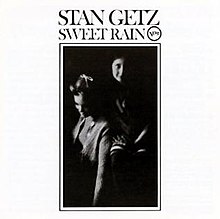Domi & JD Beck: Jazz Arranger Analysis
In this video, I analyze the intro to "NOT TiGHT" by Domi & JD Beck - as performed in their Tiny Desk Concert. Just discovered this artist, and I can't believe what I'm hearing! Makes me so optimistic for music!

Hi guys, my name is Adi Ashaya. I'm an arranger, composer, and producer, and if you've ever watched any of my videos, they are typically on the subject of arranging tips and techniques. I was just about to start another one when I got a link from my daughter to a Tiny Desk concert by Domi and JD Beck.

As I was listening to this, it really threw me back into the late '70s when I was a younger musician really interested in Chick Corea and Herbie Hancock. I remember that feeling of running to the store, excited about buying a new record. As I was listening, I started recognizing certain elements that really combine the old and the new in a way that is really worth talking about. I want to bring up a couple of things.
The first one is the drum sound. This drum sound was familiar to me even though this is a completely different kind of playing, but I remembered suddenly the way Grady Tate sounded on the Stan Getz "Sweet Rain" record. That was something that came out in 1967.

If you are interested in learning music check out our Music Lessons in Denton.
I noticed actually for the first time that the drummer placed those towels on top of the drums and it gave you this really, really dry sound. So if you ever check this album, pay attention to the drum sound. Of course, Chick Corea and Stan Getz were fantastic on that one, but something about Grady Tate’s drumming that is worth checking out. Her chordal structure also was reminiscent of Steps Ahead "Pools" from 1983.

There was some great combination there between the functional harmony and the non-functional harmony in such a nice and natural way, and this is a completely new kind of sound. But as far as the textures, a lot of this was familiar, and I thought maybe I'll just take the intro and take it apart a little bit and talk a little bit about the harmonies and the various techniques that I can actually recognize.
If you are interested in learning music check out our Music Lessons in Denton.
The first one is the hybrid chords. The concept with hybrid is that you can build your chords in the most basic structure in thirds, and you start with a root, go to the third, go to the fifth, go to the seventh. If you continue building more thirds, then you arrive at the tensions, which are the 9th, 11th, and 13th. Then you go back to the basic structure and remove some of the supporting notes like the third. If you take a third out, for example, you can build a G triad over a C root. That, in other words, is basically like saying C major ninth without the third.
There are a lot of different combinations of chords that you can build that way and create some ambiguity with a harmony that really adds a little more spice to the whole thing. This is a B-flat major ninth chord. If I take the root down an octave, this is the upper structure of the chord starting from the third.
Also check out our article: Electric Guest Music Career Journey
Now, if I took the third out of the chord, now the chord sounds a little more ambiguous, and we're basically looking at something like an upper structure triad where we have F triad over B-flat bass. A series of such chords would sound like this.
The second type of voicing that I recognized on Domi’s recording is voicings in fourths. Typically, you hear those kinds of chords in big band arranging where you have at least four or five parts playing in adjacent fourths which gets a little harsher kind of sound to the chord than your typical layers of thirds.
Keyboard players tend to play three parts because if we play a chord with our right hand and just a bass note and left hand with force, that's as much as we can most of us can reach so um much of what i recognize on Domi's recording is voicings and force on the right hand and bass note on with the left hand when you play that over an inverted bass, you get sometimes a much sweeter sound than you would typically get with harshness of adjacent force over the root.
An example would be let’s take for example B-flat major chord. If you voice your chord from top to bottom, B-flat, F, and C, that structure by itself can have a little harshness to it with a root.
It really emphasizes that sound that is actually missing the third. But if you play this as an inversion with a D on the bottom, suddenly it’s a completely different thing. It sounds something that some people would even call like B-flat 2 over D, and it’s a different kind of inversion, but you really take advantage of the force. So we’ll look at where she uses those kind of sounds. Let’s take a look at voicings in fourths in three parts.
This is G major six or G major seventh. The notes that would be available in either one of these chords would be the root tension nine, the third, the fifth, the sixth that could also be tension 13 in case you use the major 7th as well, and the major 7th. Again, these are the available notes.
Now if I drew three-note voicings and fourths, here are some possibilities. If they are in root position, they would sound this way. They’re a little hollow. They’re a little more incomplete and have a bit of stark tone to them. In the next example, we have them inverted. So basically, you take a couple of those voicings and place it over the third in the bass, so the chord symbol actually looks like G6/9 over B. So these are the sweeter sounding chords.
I’m going to conclude this video with a very loose transcription of what I thought Domi's intro sounded like, and you’ll see a little analysis of the techniques that we mentioned today that hopefully will sum up all these materials for you.
If you are interested in the type of materials we discussed today or in any kind of arranging techniques, check out my arranging tips videos.
Please subscribe to my channel, and look out for courses that are coming up sometime soon. Thank you again for watching, and we’ll see you on the next one.
If you like this check out our article: Electric Guest's Music Career
